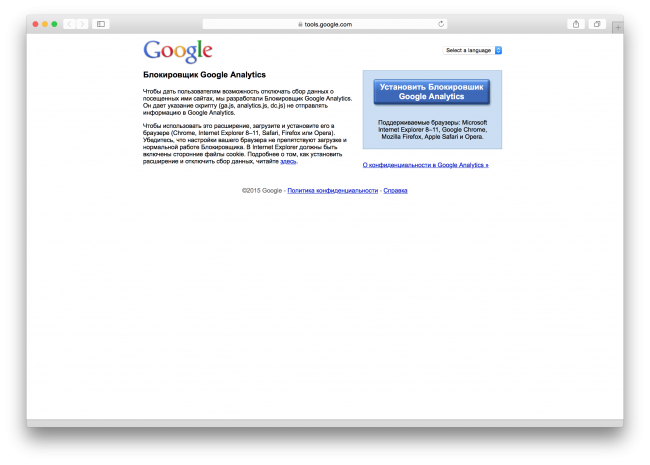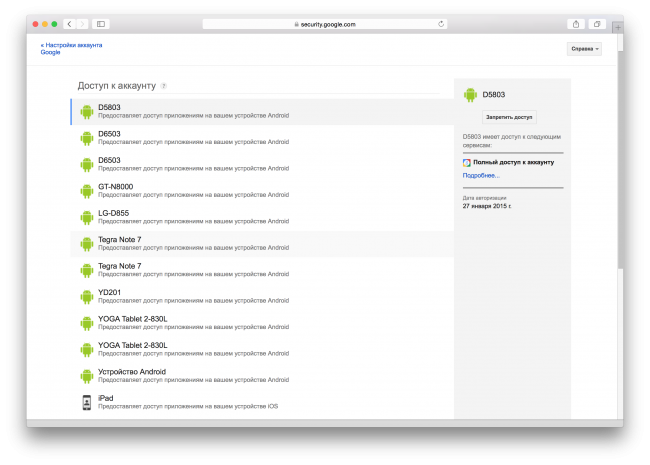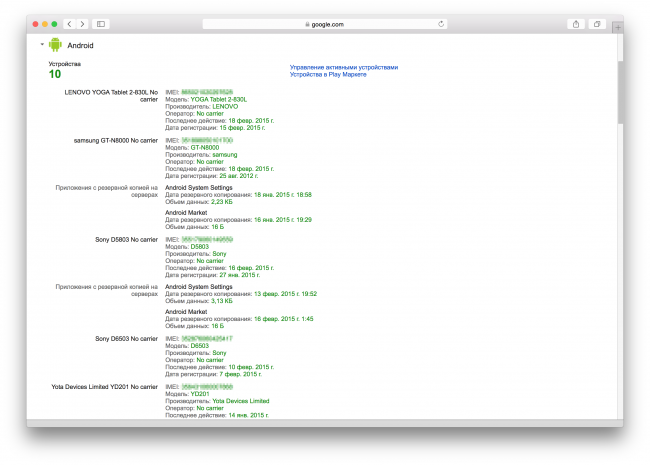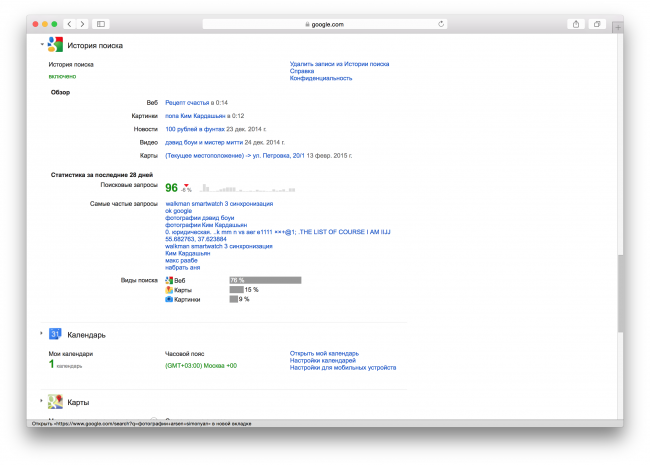If you regularly experience the following problems in your Chrome browser, you may have malware installed on your computer.
- Pop-ups and new tabs appear that cannot be closed.
- Home page or browser search engine changes without your knowledge.
- Chrome has added unnecessary extensions or toolbars.
- The browser keeps redirecting you to unfamiliar ads or pages.
- Messages appear about virus threats or that the device is infected.
This article explains how to remove unwanted software. To prevent it from getting onto your computer again, go only to secure sites and do not download files from resources that you do not trust.
Step 1: Remove malware from Chrome (Windows only).
If you are using Mac OS or Linux, skip to step 2.
In OS Windows browser Chrome can find and remove suspicious software.
- When Chrome alerts you that it has been detected unwanted programs, press Delete. After this, extensions will be disabled in the browser, and some functions will be restored to their default settings.
- If necessary restart your computer.
To enable extensions you trust on the right top corner browser, click on the three dots icon Additional tools Extensions and check the boxes next to the required items.
The Chrome browser periodically scans your device and collects information needed to detect malware. To learn how this data is used, see Google Chrome Privacy Policy.
Step 2: Remove malware (all OS).
If you have an antivirus installed, scan your computer with it and remove all suspicious and unfamiliar programs.
Step 3: Reset Chrome browser settings (all OS).
Additional Information
How to protect your computer from malware
- Don't fall for scammers' tricks, such as messages about winning the lottery. Most likely, these are attempts to trick you into downloading malware.
- If you haven't run antivirus software, be vigilant for warnings about viruses and infected devices. These may be the site's attempts to force you to download unwanted software.
- Download files only from trusted sources and visit only trusted sites. More details
Whether you like it or not, if you have Google account- Google knows everything about you. Literally - how often and what you breathe, where you go and who you meet, what you eat and what you drink with it. Don't believe me? Correct, but only partly: if you use an Android smartphone, Google even knows what you yourself have long forgotten. For example, what did you use five years ago or where were you last year on the first of October.
Whose fault is it that Google knows things about people that they probably wouldn't want to share? The answer is simple - a person indicates some of the information in his profile, and the search engine skillfully uses the data received. Let's start with the most annoying thing - with the display of advertising, which, if targeted correctly, you will probably pay attention to.
Let's say you indicated in your profile that you are a man. In this case, Google will not bother you with cosmetics, but will offer something from the product category that is most likely to interest you: tools, cars or models for assembly. If you indicated additional data - for example, your age - they will also be taken into account, and the advertisement will more accurately hit the target.
You can check what exactly you have allowed to know about yourself on this page (you must have a Google account).

The Google Analytics service is always on guard, and monitors what resources, when and how often you visit, and what exactly interested you in them.
However, in accordance with the law and taking into account the dissatisfaction of many users, Google has provided the ability to disable surveillance. This can be done.

But these are just flowers. The berries are stacked in the user's personal account.
Let's start with the account. Here you can find out which providers you used to access the Internet this month, in which browsers and on which operating systems logged into your account, and what applications or services requested access to your account. However, for now, let’s not rush to accuse Google of collecting unnecessary information: such information is important, first of all, to the user himself. After all, thanks to them, you can find out for sure whether an outsider has logged into your account, or whether the owner has accidentally subscribed to an unnecessary service. Periodically checking the activity in your account is a good habit, so in the same section you can activate the function of reminders about the need for such checking in the form of emails.

Here you can change your password, check associated applications and sites, and deny them access to your account if you no longer trust the application or deleted it from your device. Even if you do not use the program, unscrupulous developers can force it to receive data from your account or perform actions on your behalf. If you sell your gadget, you should deny access to your Google account and it. In addition, this action is mandatory if the smartphone is lost and cannot be found. standard means Android remote control.

Android section - This displays the devices on which you logged into your account.


The “Calendar” section will be of interest to those who use this service to record meetings and events. The “Maps” section contains data about saved addresses. And here you can create a profile in the service " Google Maps" to show others your favorite places, add reviews of businesses, create maps and tag your favorite places on them, get easy access to all the maps and reviews on your profile, or share your thoughts and reviews with friends.

“Contacts” and “Mail” are, perhaps, the only things that everyone knows everything about without prompting, so there’s no point in dwelling on these points.
The last two items on our page are “Profile” and “Chrome Sync”. The first section contains basic information about your profile: name, address and edit link.
And in the “Chrome Sync” tab, information about the browser is stored - how many passwords, bookmarks and extensions you have saved. From here you can get to the synchronization settings.

If you are concerned about such attention to your person and you want to delete your account, it is likely that you will need to download all your data. Fortunately, Google also provides this option - the data can be downloaded at once, and from one place.

From the point of view of the owners of these services, users of free search services are not so much clients as a product that is offered to the advertiser. And the more the search engine knows about you, the more accurate the advertisement will be, and the more expensive it can be sold. One who believes that others search engines he is not being followed, most likely he is mistaken - everyone is watching, it’s just that not everyone shows the results of this surveillance. Do you agree to continue to be a “commodity”, or do you think this is a fair price to pay for using free services?
Under Android control(at least the one certified by Google) contains not only components assembled from AOSP, but also an impressive number of proprietary Google programs. These are the same ones Google Play, Gmail, Hangouts, Maps and a bunch of other applications, including dialer and camera (starting with KitKat).
For all these components there is not only source code, but also no explanation at all about the principles of their operation. Many of them are initially created for the purpose of collecting certain types of information and sending them to Google servers. This is, for example, how GoogleBackupTransport, which is responsible for synchronizing the list, behaves installed applications, passwords and other data, GoogleContactsSyncAdapter, which synchronizes your contact list, or ChromeBookmarksSyncAdapter, whose job is to synchronize browser bookmarks. Plus collecting information about all queries in the search engine.
There is, of course, nothing wrong with the fact of synchronization, and it is an excellent mechanism that allows you to configure new phone in a matter of minutes, and Google Now even manages to give us useful information based on our data (sometimes). The only problem is that all this destroys our privacy, because, as Snowden showed, under the hood of the NSA (and, most likely, a bunch of other services) is not only some evil empire called Microsoft, but also Google, and as well as many other companies from the “we are not evil, but fluffy philanthropists” crowd.
In other words: Google will merge us all without any problems, and it’s not a fact that its employees, sitting in their offices with masseuses and dogs, are not laughing at the names from your contact book (everything is encrypted there, yes), drinking 15-year-old pu-erh from Yunnan Province. Or maybe to hell with Google? Let's take their Android and let them go through the forest?
What is Google Apps
The latest version of the custom KitKat-based firmware for my smartphone weighs 200 MB, however, in order to get a real experience from the smartphone, I also have to flash the gapps archive on top of it, the size of which is 170 MB. Only after this will I receive a system similar to that pre-installed on Nexus devices, with all the goodies in the form of a desktop integrated with Google Now, a screen lock based on a face shot, a camera with support for spherical shooting and a kilogram of Google software, from Google Play to Google Books.
I repeat once again: all this is closed software from Google, which in a good way cannot be distributed at all without their knowledge (that’s why it is not in custom firmware like CyanogenMod), but since it is quite easy to extract it from the firmware of Nexus devices, you can find it on the Internet a huge number of similar archives, including severely truncated ones. In order to release an Android smartphone with a set of gapps on board, the manufacturer must send it for certification to Google, which, after evaluating the quality and performance of the smartphone, will either give the go-ahead or kick it (but this does not stop the Chinese at all).
This is how Google Apps get to your smartphone. Of the users, 99% either use pre-installed applications or install them themselves on absolutely clean and completely anonymous firmware. And then, from the moment you enter your username and password, synchronization and downloading of information begins.
To figure out how this happens, let’s unpack the same archive with gapps and take a look inside. We are interested in the /system/app and /system/priv-app directories; during installation, their contents are copied to the directories of the same name inside the smartphone. The second directory is a KitKat innovation, apparently invented to store private applications that are accessible only to the administrator (owner) of the device and invisible to other users logged into the system.
In the /system/app directory we will find a large number of various Google applications, easily recognizable by the name of the package: Books.apk, Chrome.apk, Gmail2.apk and so on. Each of them will share information differently, but that's totally fine (yes, Google will know you're reading Paulo Coelho through their app!). The greatest danger here is GoogleContactsSyncAdapter.apk, which is only responsible for sending a list of contacts to the remote server. We write down the name in a notepad and move on.
Most of the files from the /system/priv-app directory are the services and frameworks necessary to run this whole synchronization and surveillance machine:
- GoogleBackupTransport.apk - synchronizes data from installed applications, Wi-Fi passwords and some settings;
- GoogleLoginService.apk - connects the device with a Google account;
- GooglePartnerSetup.apk - allows third party applications gain access to Google services;
- GoogleServicesFramwork.apk - a framework with various auxiliary functionality;
- Phonesky.apk - Play Store(surprisingly);
- PrebuiltGmsCore.apk - Google Services, as the name suggests, is the core of the entire gapps suite;
- Velvet.apk is a Google search that includes a desktop search bar and Google Now.
SpoilerTarget"> Spoiler: Method number 1. Disabling through settings
The easiest way to unlink a smartphone from Google is to use standard settings systems. The good thing about this method is that it does not require root rights, installation of custom firmware, or custom recovery. Everything can be done in any stock firmware without losing access to your account and applications like Gmail (if necessary). However, no one will vouch for the efficiency, since it is quite possible that some gapps components will continue to send data.
The main location for synchronization settings is the menu “Settings -> Accounts -> Google -> [email protected]" Here you can disable things like syncing contacts, application data, Gmail, Play Music, Google Keep, and more. All you need to do is simply uncheck the desired menu items. Next, go to the “Settings -> Backup and reset” menu and uncheck the “Data backup” and “Auto recovery” items.
The Google Settings application, which is part of Google Services, is also responsible for many synchronization settings. With its help, in particular, you can disable Google access to the location (“Access to geodata -> Access to my geodata / Sending geodata / Location history”), disable sending personal data to the search engine (“Search -> Personal data”), disable Google Now (“Search -> Google Now”) and disable remote control(" Remote control -> Remote search devices / Remote lock and reset").
In the same " Google Settings", by the way, you can disable any application that uses your Google account for authorization. We are talking not only about the software installed on the device, but also about all applications ever used, including websites. For example, I found a lot of sites on this list that I haven’t visited for at least a couple of years.
In case you are not going to use it at all Google services, it will be easier to disconnect your smartphone from your account completely, that is, simply delete it through the settings: “Settings -> Accounts -> Google -> [email protected]-> Menu button -> Delete account.”
Majority Google applications can be safely disabled through the settings: “Applications -> ALL -> the right application-> Disable".
SpoilerTarget"> Spoiler: Method number 2. Cleaning the official firmware
In the event that the stock firmware has root rights, you can get rid of Google Apps by simply deleting them from your smartphone. As I already said, they are all stored in the /system/app and /system/priv-app directories. For example, in the case of KitKat, the list of Google applications in the first directory will be like this:
- Books.apk - Google Books;
- CalendarGoogle.apk - Google Calendar;
- Chrome.apk - Google Chrome;
- CloudPrint.apk - cloud printing system;
- Drive.apk - Google Drive;
- GenieWidget.apk - news and weather widget;
- Gmail2.apk - Gmail;
- GoogleContactsSyncAdapter.apk - contact synchronization;
- GoogleEars.apk - Google Ears (similar to Shazam);
- GoogleEarth.apk - Google Earth;
- GoogleHome.apk - home screen with integrated Google Now;
- GoogleTTS.apk - speech synthesis system;
- Hangouts.apk - Google Hangouts;
- Keep.apk - Google Keep;
- LatinImeGoogle.apk - keyboard with gesture support;
- Magazines.apk - Google Magazines;
- Maps.apk - Google Maps;
- Music2.apk - Google Music;
- PlayGames.apk - Google PlayGames;
- PlusOne.apk - Google+;
- QuickOffice.apk - QuickOffice;
- Street.apk - Google Street;
- SunBeam.apk - SunBeam live wallpaper;
- Videos.apk - Google Movies;
- YouTube.apk - YouTube.
- CalendarProvider.apk - stores calendar data;
- GoogleFeedback.apk - sends a report about using Google Play;
- GoogleOneTimeInitilalizer.apk - installation wizard for additional Google applications;
- SetupWizard.apk - setup wizard on first launch;
- Wallet.apk - Google Wallet;
- talkback.apk - voice notification about events on the device.
But that is not all. Google Apps depends on several frameworks, which are located in the /system/framework directory. These files are com.google.android.maps.jar, com.google.android.media.effects.jar and com.google.widevine.software.drm.jar. There are also many libraries in the /system/lib directory that are used exclusively by Google applications. It is not at all necessary to remove them, but it is possible. Just to clean up the trash. You can find a list of them on the website ][.
In previous (and future) versions of the system, the contents of Google Apps are different, so before deleting, I recommend downloading gapps of the required version from the site goo.im/gapps, unpacking it using WinRar and viewing the contents. You should also take into account the dependence of some applications from the market on Google applications, I will talk more about this later.
SpoilerTarget"> Spoiler: Method number 3. Custom firmware without gapps
The previous method can be significantly simplified if you simply install custom firmware on your smartphone without Google Apps. In this case, the smartphone/tablet will be crystal clear without any connection to Google. The disadvantage of this method is the absence of Google Play, but you can either replace it with a third-party application store (more on that below), or use the following method, which involves installing a stripped-down Google versions Apps.
SpoilerTarget"> Spoiler: Method number 4. Google Play and nothing else
This method of partially decoupling from Google is a kind of compromise. It does not solve the problem of surveillance - at least without the settings from the first method - but it allows you to avoid cluttering the system with a bunch of useless software that will hang in the background and eat up memory. The idea is simple - install custom firmware and upload a minimalist version of gapps on top of it, which includes only Google Play.
There are many such minimal gapps assemblies on the Internet, but I would recommend using the time-tested BaNkS Gapps, namely the “month-date” file GApps Core 4.4.2 signed.zip". They work on any smartphone, are ART compatible and include only the basic gapps files, a list of which is given in the "What are Gapps" section, framework files, as well as several libraries. Essentially, it's Google Play, synchronization tools and nothing else.
Third party marketChanging the search engine to DuckDuckGo
Even after complete shutdown synchronization, the “built-in” Google search bar will remain on the home screen. In the stock firmware of some manufacturers (Samsung, for example), this is just a widget that can be easily removed from the screen. In pure Android and devices from many other manufacturers, it is “built into” the home screen, but it can be removed by disabling all search from Google (along with Google Now) using the menu “Settings -> Applications -> All -> Google search-> Disable" or by installing a third-party launcher. Next, just download DuckDuckGo from the market or another application store and add the widget of the same name to your home screen.Click to expand...
The second and third methods involve completely getting rid of Google Apps, including Google Play and the ability to log in using a Google account, so we must find a way to simply and conveniently install applications that would not force us to download them ourselves, and then dump them on a memory card and install manually. One such way is to install a third-party market.
On this moment There are three more or less viable alternatives to Google Play. These are Amazon Appstore, Yandex.Store and 1Mobile Market. Each of them has its own advantages and disadvantages, which mainly come down to the number of applications and payment methods:
- Amazon Appstore is the most famous application store after Google Play. Contains more than 75 thousand applications (compared to 800 thousand on Google Play), the quality of each of which is manually checked, just like iTunes for iOS. You can pay using credit card or Amazon Coins, which are given as a gift for purchasing a Kindle Fire tablet or as a gift from another user. One of the most interesting features of the store is the daily giveaway one of the paid applications.
- Yandex.Store is a store from the Yandex company. Contains more than 85 thousand applications, each of which is scanned by Kaspersky antivirus. It doesn’t particularly stand out, but it has a killer feature in the form of the ability to pay for purchases using the Yandex.Money service or a mobile phone account.
- 1Mobile Market is the largest third-party repository of Android applications, including more than 500 thousand software. It differs from others by the presence of exclusively free applications (not to be confused with pirated ones), which is why it allows you not to go through the account registration stage and maintain anonymity.
Solving the problem of application dependence on Google AppsOpen Source Market
In addition to those described in the article, as well as many other lesser-known application stores, you can find on the Internet the F-Droid repository, which is different from the rest. It is completely anonymous and contains only free software distributed under licenses approved by the FSF. There are only a thousand applications in F-Droid, but all of them are guaranteed to not contain backdoors or other systems for disclosing personal data. It is F-Droid that is used as the default market in the free Android firmware Replicant.Click to expand...
Even though gapps components are not part of the official Android API, some applications still expect to see them on the system, which can cause a number of problems - from the application not working at all to losing some of its functionality. Some applications will refuse to install due to lack of Google Maps API, others crash immediately after launch without detecting it, others include direct links to Google Play, which can lead to crashes and incorrect operation.
To address these issues, XDA user MaR-V-iN started the NOGAPPS project, which is developing a set of open source components to replace the original Google Apps functionality. There are currently three replacement components available:
- Network Location is a Wi-Fi based geolocation service and base stations GSM. Based on Apple's IP address database and open base station database;
- Maps API - replacement of the interface to Google Maps based on OpenStreetMap;
- BlankStore is an open alternative to the Play Store client. Allows you to install free apps from the Google store, but is not recommended for use due to possible sanctions from the search engine (this is prohibited by their rules).
After all the manipulations, the software should work correctly.
conclusions
For the company Google Android without its own applications it is useless, so it is not surprising that the company takes out the most delicious parts of the system in them and leaves the code closed. However, in this article I showed that there is life without gapps and it can be even easier and more convenient than with Google.
P.S. I have been looking for a solution to this dilemma for a long time and now it turns out that I am on the right track..
